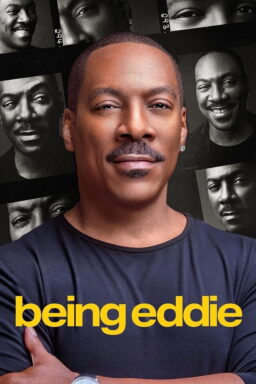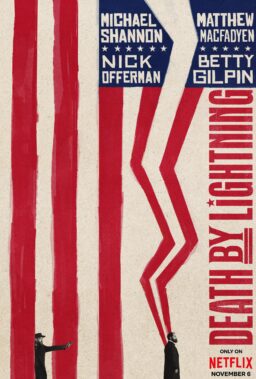
An empty landscape, an endless, desolate (and TechniScope-horizontal) landscape…

… suddenly replaced by another enormous sun-baked landscape, and the long shot is instantaneously transformed into a close-up of…

… a human face, staring into the camera — and, by extension, into the distance off-camera. It’s a variation on the signature Leone shot, and for him these faces (Clint Eastwood, Lee Van Cleef, Eli Wallach — and in other movies Henry Fonda, Charles Bronson, Jack Elam, Woody Strode…) were landscapes, and landmarks, as characteristic of his stylistic world as the buttes of Monument Valley were for John Ford. — JE
We’ve had several excellent appreciations of how the opening shot of Sergio Leone‘s “The Good, the Bad, and the Ugly” works, each with its own unique angle, if you will. Here are a few — beginning with Roger Ebert’s 2003 Great Movies review:
A vast empty Western landscape. The camera pans across it. Then the shot slides onto a sunburned, desperate face. The long shot has become a closeup without a cut, revealing that the landscape was not empty but occupied by a desperado very close to us.
In these opening frames, Sergio Leone established a rule that he follows throughout “The Good, the Bad and the Ugly.” The rule is that the ability to see is limited by the sides of the frame. At important moments in the film, what the camera cannot see, the characters cannot see, and that gives Leone the freedom to surprise us with entrances that cannot be explained by the practical geography of his shots.
There is a moment, for example, when men do not notice a vast encampment of the Union Army until they stumble upon it. And a moment in a cemetery when a man materializes out of thin air even though he should have been visible for a mile. And the way men walk down a street in full view and nobody is able to shoot them, maybe because they are not in the same frame with them.
Leone cares not at all about the practical or the plausible, and builds his great film on the rubbish of Western movie clichés, using style to elevate dreck into art. When the movie opened in America in late 1967, not long after its predecessors “A Fistful of Dollars” (1964) and “For a Few Dollars More” (1965), audiences knew they liked it, but did they know why?
I saw it sitting in the front row of the balcony of the Oriental Theatre, whose vast wide screen was ideal for Leone’s operatic compositions. I responded strongly, but had been a movie critic less than a year, and did not always have the wisdom to value instinct over prudence. Looking up my old review, I see I described a four-star movie but only gave it three stars, perhaps because it was a “spaghetti Western” and so could not be art.
But art it is, summoned out of the imagination of Leone and painted on the wide screen so vividly that we forget what marginal productions these films were–that Clint Eastwood was a Hollywood reject, that budgetary restraints ($200,000 for “Fistful”) caused gaping continuity errors, that there wasn’t a lot of dialogue because it was easier to shoot silent and fill the soundtrack with music and effects…
John Ford made Monument Valley the home turf of his Western characters, and he made great films there, but there is something new and strange about Leone’s menacing Spanish vistas. We haven’t seen these deserts before. John Wayne has never been here. Leone’s stories are a heightened dream in which everything is bigger, starker, more brutal, more dramatic, than life.
Leone tells the story more with pictures than words. Examine the masterful scene in the cemetery. A fortune in gold is said to be buried in one of the graves, and three men have assembled, all hoping to get it. The actors are Clint Eastwood (the Good), Lee Van Cleef (the Bad), and Eli Wallach (the Ugly). Each man points a pistol at the other. If one shoots, they all shoot, and all die. Unless two decide to shoot the third man before he can shoot either one of them. But which two, and which third?
Leone draws this scene out beyond all reason, beginning in long shot and working in to closeups of firearms, faces, eyes, and lots of sweat and flies. He seems to be testing himself, to see how long he can maintain the suspense. Or is it even suspense, really? It may be entirely an exercise in style, a deliberate manipulation by the director, intended to draw attention to itself. If you savor the boldness with which Leone flirts with parody, you understand his method. This is not a story, but a celebration of bold gestures….
A man with no little ideas, Leone made two other unquestioned masterpieces, “Once Upon a Time in the West” (1968) and “Once Upon a Time in America” (1984). By the end of his career, Hollywood was suspicious of films with long running times, and criminally chopped “America” from 227 minutes to a sometimes incomprehensible 139. Nineteen minutes were cut from the first release of “The Good, the Bad and the Ugly.” But uncut versions of all of his films are available on DVD, and gradually it becomes clear how good he really was.
JE: Man, I miss Roger. I miss reading him — and I miss him. His wife Chaz says he’s recuperating well, though, and I can’t wait for him to be back at his PowerBook. (He’s a Mac man all the way.) And one of the first things I’m going to do is — nudge, nudge — remind him that “Once Upon a Time in the West” (my favorite Leone) deserves the Great Movies treatment!
From Drew Holton, Denver, CO:
“The Good, The Bad, and the Ugly” by Sergio Leone. In the opening shot of this film we first see the classic Western vista of the Plains with a mesa in the distance, when suddenly a man who was leaning offscreen suddenly straightens up. What was originally a wide long shot has suddenly become an extreme closeup of the dirty, sweaty face of a man in a duster and cowboy hat, as he stares fixedly past the camera ito the distance. Without moving the camera, in one shot the film goes from distant majesty to in your face paranoia and unease, setting the tone of the whole film.
JE: Right on, Drew. We’ve examined several shots in which the image is composed and re-composed — going from full shot into medium shot into close-up and various combinations, all in the same take. But I think this is the first example so far that snaps from one extreme to the other without moving the camera! Leave it to Leone…
From Hiram M., normalmovie.com:
“The Good, the Bad and the Ugly” — An expansive Techniscope wide shot, into which walks a filthy gunslinger, transforming frame into a grotesque close-up. This opening shot is a prime example of Leone’s juxtaposition between the ultra-wide and the ultra-close. It also establishes the humor present in this last and most ambitious entry in the “Man with no name” trilogy.
From Chris Oliver, Waco, TX:
“The Good, the Bad, and the Ugly” — It begins with a panoramic shot of an open, barren vista. We hear a dog howl, and out of nowhere the sweaty, dour face of a desperado fills up the shot, with the vista still in focus. This shot is the antithesis of “Aguirre, the Wrath of God.” In “Aguirre,” the environment seems to engulf the small, pathetic humans, but in Sergio Leone’s film, the man and the environment perfectly complement each other. The cracks on the man’s face fit in with the rugged background. This guy clearly belongs here.
JE: I love your “Aguirre” comparison, Chris! As I mentioned above, Leone shoots faces like landscapes, and that’s just what he does here. (Somebody wrote of hose hugeheads, with Saturn-like wide-brim hats, as planets swirling in orbit, but I can’t remember who it was…).










